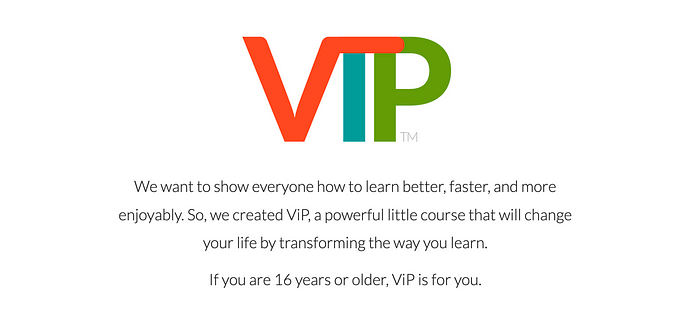
VUCA unpacked (3)—Perspective coordination
Perspective-coordination skills build upon and extend collaborative capacity skills. They are essential for constructing knowledge, resolving conflicts, solving problems, and making decisions. In other words, they are required throughout our lives for learning, working, living, and playing with others.
This article builds on earlier articles in the series: VUCA unpacked (1) — Introduction and VUCA unpacked (2) — Collaborative capacity.
What is perspective coordination?
Perspective coordination is a dynamic set of skills that supports human interactions by fostering mutual respect, nurturing creativity, expanding our minds, generating and developing ideas, leveraging conflict, and supporting healthy relationships. Robust collaborative capacity skills are a prerequisite for the development of perspective coordination skills, but you will also find that practices for building perspective coordination skills build collaborative capacity skills. Wheels within wheels.*

As shown in the skill map below, we divide the perspective-coordination mega-skill into three macro-skills — (1) identifying relevant perspectives, (2) supporting productive interactions, and (3) integrating perspectives. Each macro-skill is further broken down into mini-skills (in bold type), then micro-skills.
Identifying relevant perspectives: When it comes to perspective coordination, skills for identifying relevant perspectives come first. The primary mini-skills in this group include: consult stakeholders, evaluate sources, and consult trusted sources. Whatever your reason for applying perspective coordination skills—planning a family holiday, resolving a national crisis, or engaging in collaborative learning or problem-solving, you need to be able to identify and evaluate relevant perspectives. Choosing wisely ensures that the perspectives that matter are well-represented.
Supporting productive conversations: Ideally, any time we are involved in a conversation we’re exercising skills that help make that conversation more productive. This is especially important when the conversation is part of a learning, problem-solving, negotiation, or decision-making process. Skills that support productive conversations fall into two primary mini-skill categories: cultivate respectful interactions and facilitate generative interactions.
Integrating perspectives: Productive conversations tend to produce a great deal of information. To make the most of this bounty, we need skills for organizing information and making robust connections between the needs, values, facts, and ideas that have emerged. We also need skills for identifying and working with the tensions that arise during productive conversations, along with skills for uncovering common ground and employing conflict resolution techniques. The primary mini-skill categories for integrating perspectives include: organize information, work with tensions, employ conflict-resolution tools, seek common ground, and make robust connections.

Building micro-skills
At Lectica, we use maps like the ones published in this series, along with what we continue to learn about skill development, to design developmentally appropriate learning recommendations and practices for our assessment reports. We also train coaches, educators, and consultants to use reports and skill maps to help people build skills effectively and efficiently with a practice called micro-VCoLing.
We teach micro-VCoLing in a course called ViP. Taking ViP is the most efficient way to learn micro-VCoLing, but you can also teach yourself with the help of the information published in this blog.
Obviously, customized Lectical Reports and professional support make it easier to begin building micro-skills, but if you aren’t working with a Lectical Report, you can still use the skill maps presented in this series to get started building skills.
First, learn about micro-VCoLing by reading:
- Learning the way our brains are designed to learn,
- How to use micro-VCoLs to learn optimally on-the-fly,
- The active observer, and
- The many benefits of micro-VCoLing.
When you’re ready to try micro-VCoLing on your own, choose a micro-skill from one of the articles in this series, and spend a few days noticing situations in which that micro-skill might come in handy. This simple practice, on its own, will launch the process of building any micro-skill.
Consider the following when choosing micro-skills for practice:
- Choose a micro-skill that you need right now and have ample opportunity to practice. It should be neither too easy nor too difficult and you should feel that you have some chance of performing the skill adequately (based on your current standard) after 10–20 practices. (Note: If you’ve never tried this before, it might be a good idea to select a micro-skill from the collaborative capacity map or use one of our published micro-VCoLs from the articles above or on our web site.)
- When you first begin learning to micro-VCoL it’s perfectly fine to work exclusively on skills that already interest you, especially if you also see a need for them. However, once micro-VCoLing begins to feel natural, it’s a good idea to try practicing needed skills regardless of your initial interest in them. You’ll soon discover that most skills practiced micro-VCoL style become increasingly interesting as you build virtuosity.
- All micro-skills can be practiced at varying levels of virtuosity. This means that almost any micro-skill you choose to practice will be developmentally appropriate as long as you are continuously improving or extending the skill—VCoL-style.
- Some micro-skills, like “consulting a fact-checker” are quickly developed to an adequate level of virtuosity, others, like “supporting effective listening,” develop more slowly. Take a side-by-side look at the perspective coordination map and the map presented in the collaborative capacity article. As you examine each map, ask yourself the following questions: (a) Which micro-skills in this map are likely to develop relatively quickly? (b) Which are likely to develop more slowly? (c) What criteria did you use to classify micro-skills into these two categories?
- Some of the micro-skills in our maps, such as “facilitate group problem-solving” and “map systems,” are inherently more complex than others. These more complex micro-skills cannot be practiced as micro-skills until you have built prerequisite skills. For example, if you don’t already have good basic facilitation and problem-solving skills, you’d probably find it pretty impossible to facilitate group problem-solving.
- Because complex skills often integrate multiple precursor skills, they can be treated as micro-skills by a person who has built those precursor skills, but must be treated as macro or mini-skills by a person who has not built the precursor skills.
- Several of the micro-skills in the perspective coordination map require collaborative capacity skills. Try identifying one of these skills, then looking for precursor skills in the collaborative capacity map.
If you’d like to play with the perspective coordination map, you can download a copy of the original Simple Mind file.
Up next
VUCA unpacked (4) — Contextual thinking.
Citation for this article
Dawson, T. L. (2020). VUCA unpacked (3) — Perspective coordination.
“Wheels within wheels, Bendareth.” (This quote is from a Sci Fi story I read in my late teens. Might have been Dune, but I can’t find evidence of the original source. If you know it, please share!)

